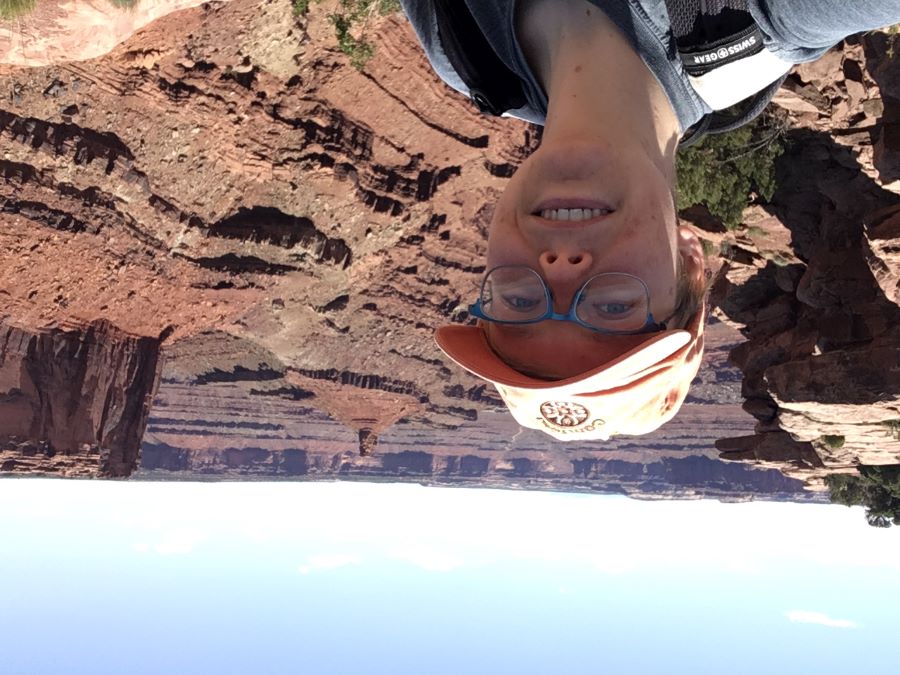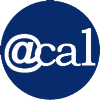
Alumni Profile
Sophia Friesen: Putting Science into Words
By Kirsten Mickelwait

From the age of 5 to 15, Sophia Friesen (PhD 2023) was obsessed with dinosaurs, and for many years they planned to become a paleontologist when they grew up. Eventually, though, they discovered that “dinosaurs are dead; there’s only so much to discover about them.” Friesen’s interest shifted to biology, with its infinite potential to study living things.
That scientific path led them to earn a bachelor’s degree in molecular genetics from The Ohio State University and then a PhD from Berkeley in molecular and cell biology, where they worked in the Hariharan Lab. While at MCB, they studied growth control—how cells know when to grow and divide and when to stop so that a body’s organs become the right size. During their PhD study, “I mastered how to learn complicated new things very fast, like when to skim a paper for the important bits and when to drill down to the details,” they say. “It’s given me a valuable perspective on what makes good science.”
Their interests soon grew to include another aspect of the work: improving how scientists communicate with the public. Friesen would start writing for various mediums as a doctoral student, which led them in a new career direction: they now work as a science communications manager at the University of Utah Health in Salt Lake City.
In that role, Friesen gets to discover what makes new research exciting, and then find creative ways to bring that excitement to other people. They interview scientists, write articles, strategize what medium would work best for each story, and determine who the audience is. “I love the variety of it,” they say. “I’m always learning something new, and I get to be both creative and analytical.”
At Berkeley, several experiences led Friesen in this direction and prepared them for a career in communications. They wrote on scientific topics—from ecology to engineering—for such publications as the Berkeley Science Review, preLights, and Massive Science. That hands-on writing experience was invaluable, they say.
“I learned how interviewing people with a variety of perspectives can bring a story to life. I learned what really great editing looks like and how to edit other people’s work constructively. I even had the chance to ‘get under the hood’ and work on the nuts-and-bolts aspects of going from a list of great ideas to a fresh stack of magazines.”
In addition, they served as a 2022 American Association for the Advancement of Science (AAAS) Mass Media Fellow, working with North Carolina Public Radio to report and produce science news stories for both web and radio. “I knew I liked writing,” Friesen says. “What the AAAS fellowship showed me is that I liked writing all the time—not just as a sideshow to my own research, but as a full-time job. I learned to write on deadline; I learned to tell stories in extremely short formats. The fellowship was also a really critical confidence boost; it proved that my storytelling is worth something concrete, that I could hold my own with professional journalists and make stories that people want to read or listen to.”
While at Berkeley, Friesen served as a member of the Queer and Trans Committee and was active in inclusiveMCB, helping to develop recommendations for departmental initiatives to increase equity, inclusion, and belonging. Salt Lake City, known for its conservative religious community, has what Friesen calls a “strong cultural dichotomy.” In addition to the LDS culture, there is also “an incredibly strong queer community, which has been super valuable to me as a nonbinary person making my way in a new place,” they say.
They’ve also discovered one particularly exciting resource: the world-renowned Natural History Museum of Utah. Its Cleveland-Lloyd Dinosaur Quarry includes dozens of skeletal reconstructions on display, including the world’s largest display of horned dinosaur skulls. That childhood obsession lives on.
For MCB students who think they might like to pursue a career in science communications, Berkeley graduate students and postdocs are eligible to start building a portfolio with the Berkeley Science Review, preLights, or scienceBites, where you can have your work edited. Or start your own blog. “Just jump in and see if you like it!” Friesen says. “The world needs more great science communicators.”
To learn how to write for the Berkeley Science Review, a graduate student-run publication on campus, click here! https://www.berkeleysciencereview.com/write-for-us/
Back to Main Fall 2024 Newsletter Page




